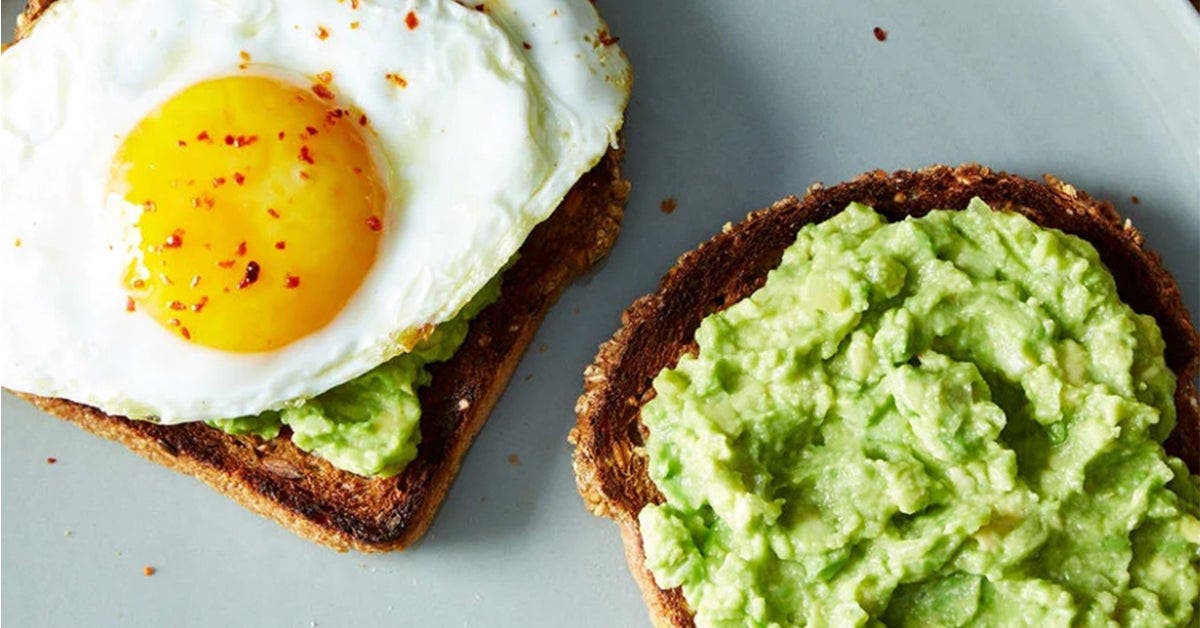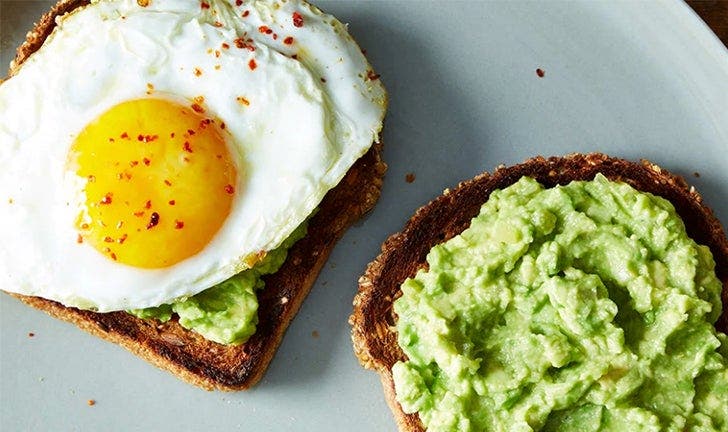8 healthy-fat foods and why they are important


For years, popular culture denounced dietary fat as weight-loss enemy No. 1. Public opinion has finally shifted back in favor of fat—which is good news, since that view actually aligns with nutrition science. Along with carbohydrates and protein, dietary fat is a macronutrient that provides energy for the body. You can’t thrive without it! “Your body needs fat to absorb vitamins A, D, E, and K, as well as antioxidants like lycopene and beta-carotene,” says registered dietitian Alissa Rumsey, owner of Alissa Rumsey Nutrition and Wellness in New York City.
Fat also helps meals feel more satisfying—as it travels through the digestive system, fat stimulates the release of a hormone called cholecystokinin, which sends fullness signals to the brain. And let’s not overlook its sheer deliciousness: “Fat tenderizes and lubricates, which enhances a food’s flavor and gives it a velvety texture,” says registered dietitian nutritionist Patricia Bannan, author of Eat Right When Time Is Tight.
General macronutrient recommendations set forth by the National Academy of Sciences suggest that fat should make up 20–35% of total calorie intake to support optimal health. The types of fat you eat matter, too, explains registered dietitian Brian St. Pierre, director of nutrition at Precision Nutrition. Here’s a closer look at healthy versus unhealthy fats, along with some nutritious food sources to consider putting on your plate.
Understanding “healthy” vs. “unhealthy” fats
Some kinds of fat are better for the body than others. For the full scoop, check out WW’s comprehensive guide to dietary fats. Here’s a cheat sheet, followed by a helpful food list to get you started.
Unsaturated fat
This is the “healthy” fat most experts recommend emphasizing in your diet. Unsaturated fat comes in two forms: monounsaturated and polyunsaturated. Both play a role in building and maintaining cells. Unsaturated fats also help control levels of harmful LDL cholesterol, which can lower a person’s risk of developing heart disease or experiencing stroke.
- Monounsaturated fats are found in plant-based oils such as olive, canola, and safflower oils. Avocados, peanut butter, and some nuts and seeds also contain monounsaturated fats.
- Polyunsaturated fats are richly concentrated in sunflower seeds, as well as oils derived from soybean, corn, and sunflower. Omega-3 and omega-6 fatty acids, also part of the polyunsaturated category, are found in fatty fish such as salmon, sardines, trout, and herring, as well as canola oil, walnuts, and flaxseed.
Saturated fat
Saturated fat is one to consider limiting: The 2020–2025 Dietary Guidelines for Americans advise capping saturated fat intake at 10% of daily calories. Found primarily in animal sources—such as meat and dairy—as well as in coconut and palm oil, saturated fat can increase blood levels of LDL cholesterol when consumed in high amounts.
Trans fat
Trans fat is one you may wish to avoid as much as possible. It increases LDL cholesterol and lowers beneficial HDL cholesterol, which likely explains its link to heart disease, stroke, and type 2 diabetes. Most trans fat found in the Western diet is man-made, through the industrial process of hydrogenation. (Small amounts occur naturally in some meat and dairy products.) Trans fats are frequently added to packaged foods such as baked goods, frozen pizza, and fried foods to achieve a desirable texture and extend shelf life. Trans fats are listed on Nutrition Facts labels, so consider reading closely while grocery shopping.
Cholesterol
Cholesterol is a fat-like substance that is only found in animal products, such as meat, eggs, and full-fat dairy. Your body needs some cholesterol to produce vitamin D and hormones, and keep cells healthy—but the liver makes all the cholesterol required. And despite its negative reputation, research shows that dietary cholesterol doesn’t increase blood cholesterol levels.
Healthy-fat foods: 8 foods that contain unsaturated fats
“To get more satisfaction and nutritional benefits out of your meals, try to incorporate healthy fats into every one,” advises Lauren Antonucci, a registered dietician nutritionist and the owner of Nutrition Energy in New York City. Here are some tasty options to try.
1. Avocado
Avocados contain monounsaturated and polyunsaturated fats. They’re also high in fiber, and are full of nutrients including folate, magnesium, potassium, and vitamins B, C, E and K. Avocado’s creamy texture and delicious taste make it a perfect addition to a simple shrimp salad or a mayo alternative on a sandwich.
2. Eggs
One large egg provides 5 grams of fat, with the bulk (2.7 g) being unsaturated. Eggs are also rich in protein, the essential nutrients vitamins A, D, and B12, and brain-boosting choline, which plays a role in memory and mood. Eggs are naturally high in cholesterol, but for most healthy people, that’s not a concern. Some simple cooking hacks for eggs can help ensure you get the most from your dozen.
3. Fatty fish
Salmon, cod, mackerel, anchovies, herring, and albacore tuna are high in omega-3 fatty acids, which reduce inflammation and may protect the heart. In a research review published in the Journal of the American Medical Association, eating one or two servings of fatty fish a week was associated with a 36% lower risk of dying of heart disease. A few simple recipes can help you get more seafood into your regular rotation.
4. Nuts
Nuts are full of healthy unsaturated fats, as well as protein, fiber, and vitamin E. Walnuts have the bonus of also being high in omega-3 fatty acids. Whether you favor almonds and cashews, pecans or pistachios, keep the portion size in mind: A serving of nuts is 1 oz—about 18 cashews or so.
5. Olive oil
Olive oil is predominantly made up of a monounsaturated fat called oleic acid, which may help lower blood pressure and reduce inflammation. It’s also got loads of antioxidants, along with vitamins E and K.
6. Seeds
Seeds are small but mighty when it comes to nutrition. They’re high in unsaturated fat, fiber, antioxidants, calcium, and protein. Chia seeds and flaxseeds, in particular, are hearty sources of omega-3 fatty acids. And fun fact about chia: The seeds can be used to make a delicious pudding!
7. Nut and seed butters
Peanut butter lovers, rejoice: Most of the fat in seed and nut butters comes from the healthy monounsaturated and polyunsaturated kinds. These spreadables are also a delicious source of protein, fiber, vitamins, minerals, and phytochemicals.
8. Olives
Just like their oil, olives are high in vitamin E and other powerful antioxidants. They also contain healthy, polyunsaturated and monounsaturated fats that help reduce inflammation. They’re delicious as a snack marinated with orange and fennel, or as a pop of flavor in a simple chicken dish.
Healthy fats and weight loss
The basic rule always applies: A calorie deficit is required for losing weight. And it’s totally possible that eating foods containing healthy unsaturated fats could help make that happen. “Eating more healthy fats and fewer highly processed fats [may] leave you feeling more satisfied and better nourished, which can make it easier for you to potentially lose weight,” St. Pierre says. Indeed, research suggests that healthy fats may help people feel more satisfied with modest portions: A small study published in the journal Obesity found that a diet rich in polyunsaturated fat was linked to increased secretion of the appetite-suppressing hormone PYY.
Higher-fat diets
Some research suggests that high-fat, low-carb diets—like the Paleo, keto, and Atkins plans—are more effective for short-term weight loss than high-carb, low-fat diets. But that’s a comparison of two extremes. Most experts, including those on the WW Science Team, agree that a balanced and livable mix of fat, carbs, and protein most strongly supports healthy weight management over time.
“The more restrictive [a diet] becomes, the harder it is to follow in the long-term—and it’s consistency that matters in the end,” St. Pierre says.
The upshot: Are healthy fats fact or fiction?
Fat is an important part of a healthy diet. In addition to being necessary for the absorption of certain key vitamins, it can help reduce inflammation, increase satiety, and support other aspects of wellbeing. While WW steers clear of declaring specific foods “good” or “bad,” research has consistently demonstrated that different types of fat affect the body in different ways. Diets that emphasize unsaturated fats are associated with health-protective benefits, while diets high in saturated and trans fats are associated with an increased risk of developing certain diseases. Learning to identify and incorporate healthy unsaturated fats into your diet can be a simple way to help support your wellness goals over time.
--
Lindsey Emery is a freelance writer and editor who has been covering health, fitness, sports, nutrition and gear for almost 20 years. She lives in Portland, Oregon.
